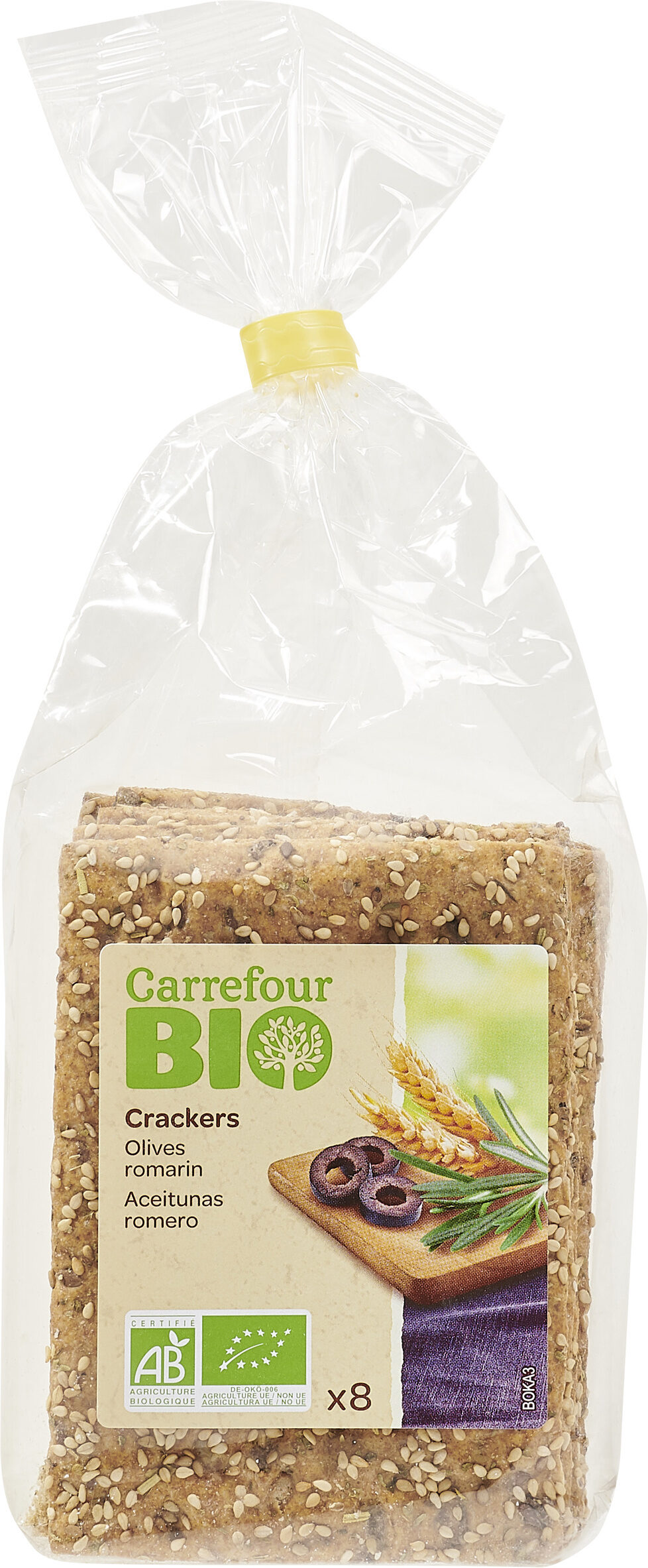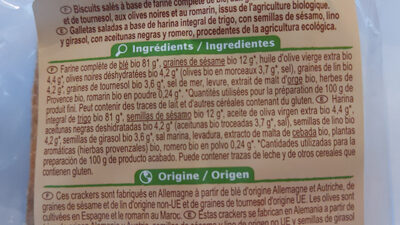Crackers Olive romarin - Carrefour bio - 200 g
Some of the data for this product has been provided directly by the manufacturer Carrefour.
Barcode: 3560070927807 (EAN / EAN-13)
Common name: Biscuits salés à base de farine complète de blé, aux graines de sésame, de lin et de tournesol, aux olives et au romarin, issus de l'agriculture biologique.
Quantity: 200 g
Brands: Carrefour bio, Carrefour
Categories: Snacks, Salty snacks, Appetizers, Crackers, fr:Crakers
Labels, certifications, awards:
Organic, Certified by Ecocert, EU Organic, DE-ÖKO-006, EU Agriculture, Made in Germany, NL-BIO-01, AB Agriculture Biologique

Origin of the product and/or its ingredients: Ces crackers sont fabriqués en Allemagne à partir de blé d'origine Allemagne et Autriche, de graines de sésame et de lin d'origine non-UE et de graines de tournesol d'origine UE. Les olives sont cultivées en Espagne et le romarin au Maroc.
Origin of ingredients: European Union
Producer: Fabriqué en Allemagne par Dr. Klaus Karg KG pour Interdis - TSA 91431 - 91343 MASSY Cedex - France
Manufacturing or processing places: Allemagne
Traceability code: EMB 75109Z - Paris 9e Arrondissement (Paris, France)
Stores: Carrefour, Carrefour market, carrefour.fr
Countries where sold: Italy, Spain, fr:Francia
Matching with your preferences
Other information
Other information: BOKA3 x8
Conservation conditions: A conserver dans un endroit frais, à l'abri de la chaleur et de l'humidité. Pour une dégustation optimale, à consommer de préférence avant fin / N° de lot : voir au dos de l'emballage.
Customer service: Interdis - TSA 91431 - 91343 MASSY Cedex - France
Report a problem
Data sources
Product added on by openfoodfacts-contributors
Last edit of product page on by alex-off.
Product page also edited by carrefour, didierg, driveoff, ecoscore-impact-estimator, elfronto, elttor, gevana13, kiliweb, musarana, org-carrefour, packbot, palo1995, quechoisir, roboto-app, tacite, teolemon, thaialagata, yuka.VjQ0S0xZMVJpUFl4bGRoaHh6VFZxdkZ2NUovMVpHYnNHN0lmSVE9PQ, yuka.WVlJdEZwd1Q5NklEeE1RQTF5Mk0xWU5xeHJPalpXV1pMTFJLSVE9PQ, yuka.ZlprRUQ0cGNyZXNwaS9jNytRLyswOWRlLzZDbFJseUxOdElKSWc9PQ.















